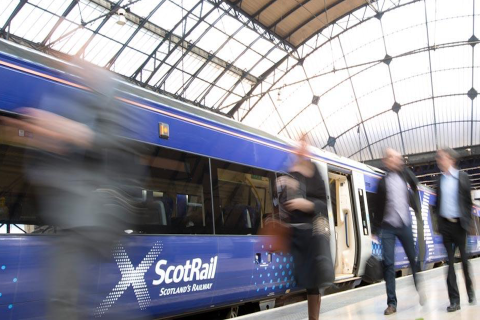SBB conduct remote-controlled locomotive test runs with Alstom

Swiss Federal Railways (SBB/CFF/FFS) and Alstom, have begun conducting test runs where personnel operate a locomotive remotely without disrupting regular operations. These tests, using Automatic Train Operation (ATO) systems, could potentially be used for short-distance movements within construction sites.
From February to March 2024, SBB and Alstom conducted several test runs with remotely operated locomotives. Alstom’s system allows locomotives to be piloted from a remote control room. These test runs, operating under Automated Train Operation (ATO), demonstrated the ability of train drivers to remotely guide a malfunctioning train to a safe zone. Autonomous passenger trains are not currently a priority for Swiss Federal Railways.
In the future, this mode of operation could be useful in tunnel maintenance or construction sites, where only short movements are needed during the night. This system would provide greater flexibility in such scenarios. Other potential applications include moving trains between storage and departure tracks, allowing train drivers to board and disembark with passengers and reducing workplace accidents such as trips or falls in the rail yard. However, before implementing these applications, further development of technical systems and adjustments to operational processes and European regulations are necessary.
Trial run
During the test runs, 24 train drivers took on the role of “remote operators” and manoeuvred a locomotive located in Zurich Mülligen using a control panel. This marked one of the first tests in Europe conducted in an operational rail yard rather than on separate tracks.
At Oerlikon, a remote control panel developed by Alstom was used, resembling a simulator control panel, but with real-time images displayed on screens. These images, captured by various cameras installed on the vehicle, allow remote operators to view the railway track, signals, and any obstacles.
The locomotive in Zurich Mülligen responded to the switches and other control elements operated by the train drivers, reaching a maximum speed of 30 kilometres per hour. During the tests, a test ride conductor and a test ride supervisor were on board the remotely controlled vehicle to ensure safety and could halt the operation if necessary.
“Human factor” and future projects
Beat Rappo, project manager for remote control test runs and a train driver himself, emphasised the importance of personnel involvement, stating, “Thanks to the presence of 24 colleagues from passenger and freight traffic, as well as Infrastructure and shunting service, we received a wide range of feedback. This feedback is invaluable to us for further technology development.” The “human factor,” evaluating the role of human factors and train drivers’ ability to adapt to real situations, was assessed by specialists from the German Aerospace Center (DLR) during the test runs.
These test runs are part of the Horizon Europe program “Europe’s Rail Innovation Pillar” and were funded by the Swiss Federal Office of Transport (UFT) and the State Secretariat for Education, Research, and Innovation (SEFRI).
In collaboration with the industry, Swiss Federal Railways plans to explore several ATO projects in the coming years. In addition to the test runs conducted in February and March 2024 with a remotely operated locomotive, the following partial projects are scheduled. Automatic acceleration and braking in freight traffic trails are expected to start from 2025, automatic train start-up is expected by late 2024 to early 2025, and lastly, assistance in signal and obstacle recognition is expected by late 2024 to early 2025. These planned tests aim to assess the applicability of current European regulatory projects in Switzerland and ensure the feasibility of future standards.
Further reading:




